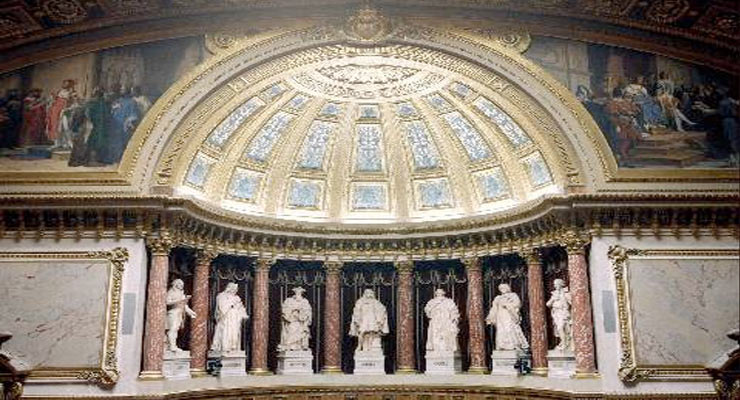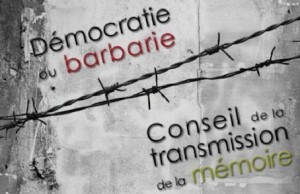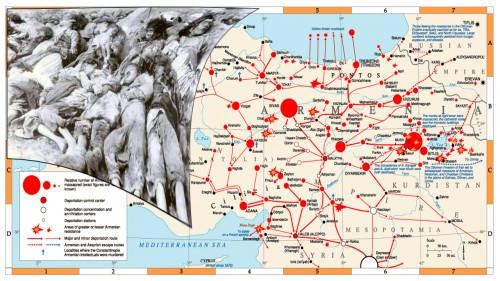 Who, after all, speaks today of the annihilation of the Armenians?”
Who, after all, speaks today of the annihilation of the Armenians?”
Adolf Hitler, 1939
Geoffrey Clarfield, Special to National Post |
Genocide is a 20th century word, coined by Polish Jewish lawyer Rafael Lempkin. He invented it to describe what the Nazis had tried to do to the Jewish people during the Second World War, wipe them from the face of the earth. Lempkin was instrumental in the creation of the UN Convention on the Prevention and Punishment of Genocide, which defines genocide as comprising five elements:
(a) Killing members of the group;
(b) Causing serious bodily or mental harm to members of the group;
(c) Deliberately inflicting on the group conditions of life calculated to bring about its physical destruction in whole or in part;
(d) Imposing measures intended to prevent births within the group;
(e) Forcibly transferring children of the group to another group.
And so, as we commemorate the Armenian genocide this week, we seek to better understand what happened and how similar events must be prevented, as almost all of the above apply to what happened to the Armenians.
In the early 19th century, much of Asia was divided between two multi-ethnic empires, that of the Orthodox Christian Tsars of Russia and the Sunni Orthodox Muslim Ottomans of the Near East, Asia Minor and the Balkans. The Russians and the Ottomans had fought many wars during the 18th century as they each tried to maximize their territory and subject peoples. One of the fault lines between these two empires was in the Caucasus and what is now Eastern Turkey/Western Armenia, on the plains near Mount Ararat.
The Russians saw themselves as the protectors, or potential protectors of the Orthodox Christian communities in the Ottoman Empire such as the Balkan Slavs, as well as the Greek and the Armenian subjects of the Ottomans, whereas the Ottomans saw themselves as the protectors of the Muslim peoples of the northern and southern Caucasus who were coming under Russian authority.
During the 19th century the Europeans invented nationalism and Europe became a continent of nation states each defined by a national language, a territory and very often a dominant religion. Soon these ideas began spreading around the world. And so, newly defined nations such as the Greeks, Bulgarians, Serbians, Croatians and Hungarians broke off from the Ottoman Empire. The Ottoman response was legal and political reform called the Tanzimat. Instead of Islamic law the Ottoman Empire declared all Muslims and non-Muslims equal before the law, in theory if not in practice.
In the second half of the 19th century the Armenians of what is now Eastern Turkey hoped for deliverance from the Ottomans by the Russians, and indeed in the 1870s Russia and Turkey went to war, with Russia temporarily occupying much of what is now Eastern Turkey.
The Armenians, an ancient nation with a 1,600-year history of Christianity, believed their time for national liberation had come and it was time to revolt against the Ottomans. Many took up arms against the Turks.
When the Turks went to war with the Germans against the allies, they declared their participation in the First World War as a jihad or holy war against the infidel
After 1900 as the turbulence on Ottoman Turkey’s eastern frontier with Russia became worse, the Ottoman Sultans lost control to radical secularists called the Young Turks who took over the government and the military. They began to redefine Muslim Ottoman identity as a Turkish national identity and therefore Turkish speaking Greeks and Turkish speaking Armenians of the Christian faith were now seen as fifth columnists and national enemies.
And so began what we now call the Armenian genocide. The prelude was the murder of hundreds of thousands of Armenian men, women and children that took place over two years, 1894-1896.
This was just a rehearsal. When the Turks went to war with the Germans against the allies, they declared their participation in the First World War as a jihad or holy war against the infidel. The government began mass arrests of Armenian intellectuals and professionals, killing and hanging many. In eastern Anatolia they planned systematic death marches where Armenian men were killed, and the surviving few men, and thousands of women and children, were marched into the desert to certain death. It is estimated that over one million people died or were killed en route.
No Turkish government has ever admitted this was a planned extermination of a specific ethnic group, including taking surviving orphans, converting them to Islam and raising them as Muslims. The Turkish government and its supporters have consistently argued that the Ottomans were engaged in a “civil war” with rebellious minorities.
Source: http://news.nationalpost.com/full-comment/lessons-from-a-genocide-annihilation-of-the-armenians-was-in-many-ways-a-rehearsal-for-the-holocaust
From sojourners to citizens, the Armenian-Canadian experience spans more than a century

 The CFC welcomes the adoption by Parliament of a text penalizing the denial of genocides that have not only been convicted by an international court, but also, earlier, as the Armenians.
The CFC welcomes the adoption by Parliament of a text penalizing the denial of genocides that have not only been convicted by an international court, but also, earlier, as the Armenians. As part of the International Day of Commemoration in memory of victims of the Holocaust, the cell Democracy or barbarism of the Ministry of the Wallonia-Brussels Federation organized 25 January 2016 in Brussels a day of reflection dedicated to genocide deniers and revisionism.
As part of the International Day of Commemoration in memory of victims of the Holocaust, the cell Democracy or barbarism of the Ministry of the Wallonia-Brussels Federation organized 25 January 2016 in Brussels a day of reflection dedicated to genocide deniers and revisionism. (
(




